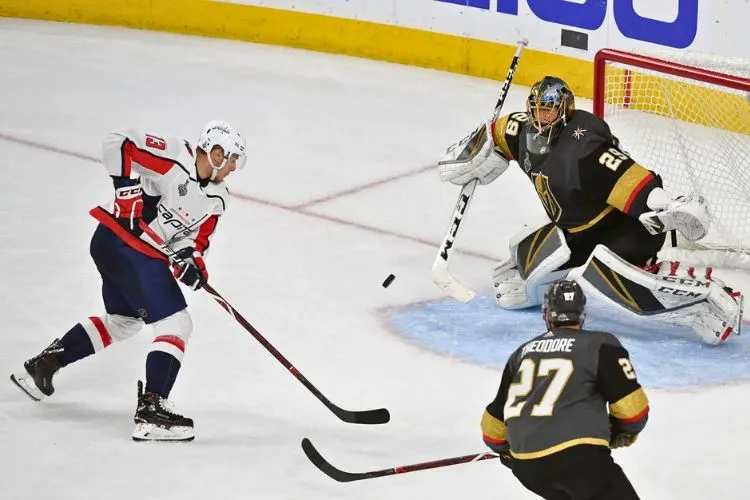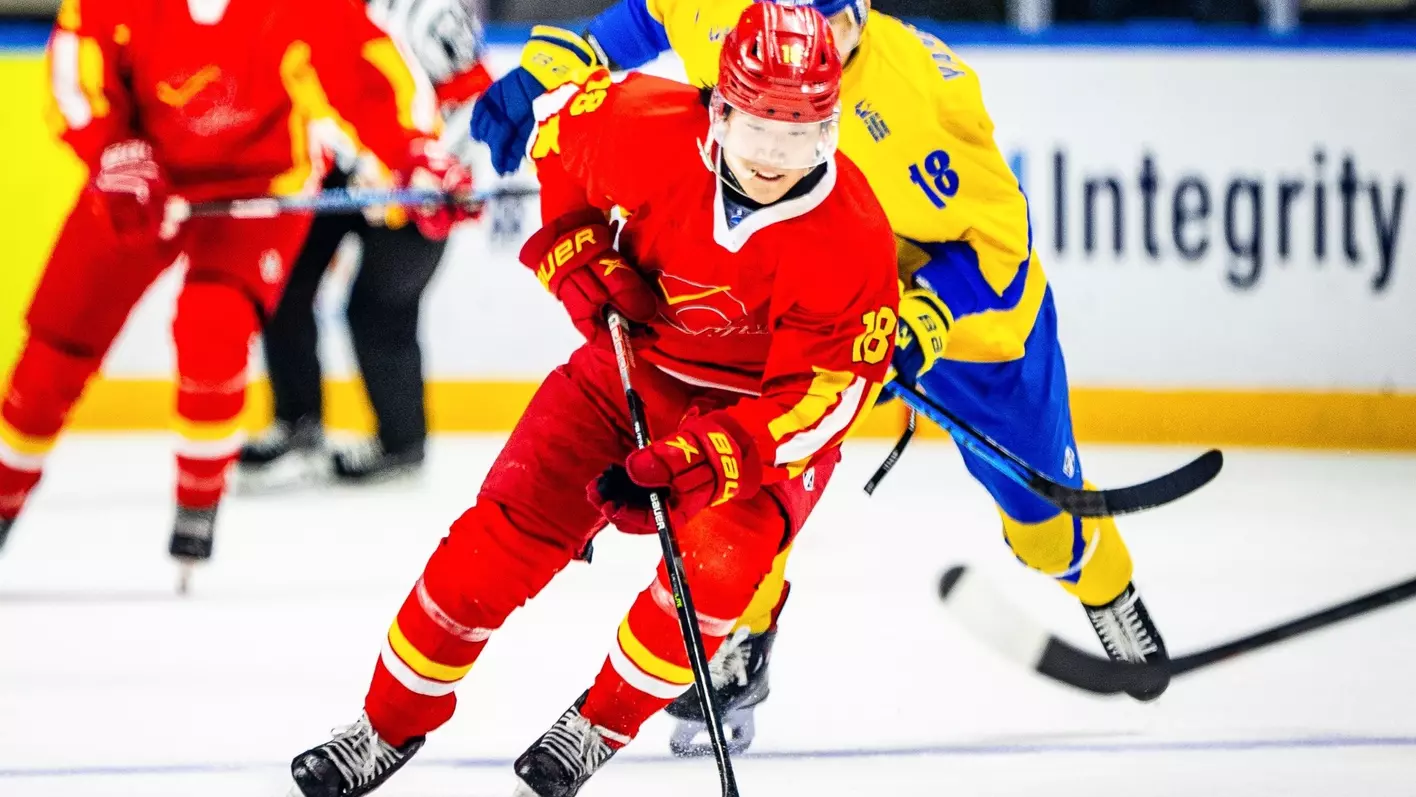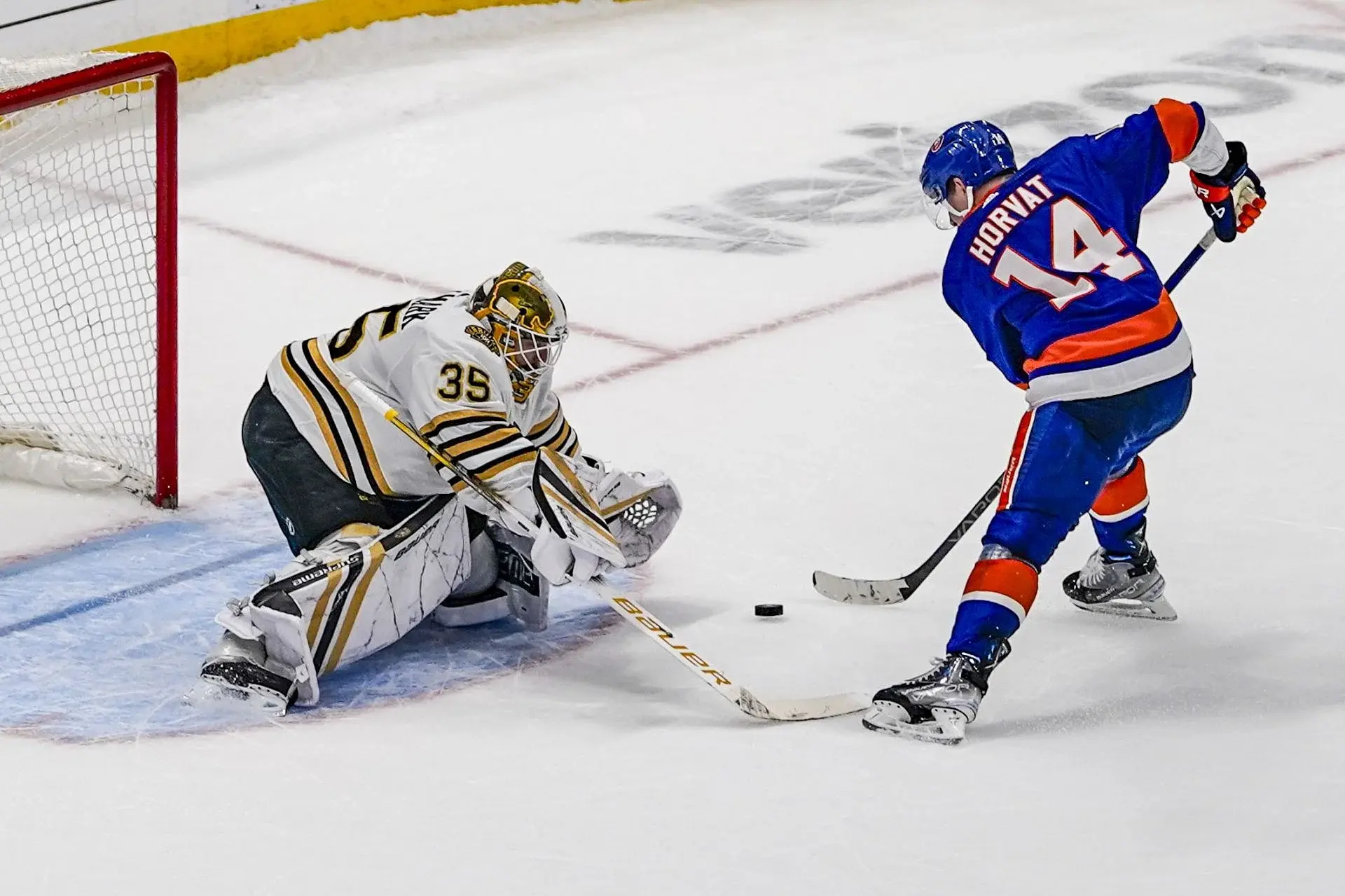Hockey fans and players often come across the acronym SOG, which stands for Shots on Goal. It’s a fundamental metric that impacts much of the strategy and analysis in hockey.
Understanding what does SOG mean in hockey and how it affects the game offers insights into strategic decisions teams make during matches and how they evaluate player performance.

Defining SOG
In hockey, a shot on goal is recorded any time a puck is directed towards the net and would have entered the net if not for being stopped by the goalie. It is a straightforward yet crucial way to measure how often a team or player attempts to score.
Not all shots that players take count as SOG; only those that truly threaten to score are included, excluding shots that miss the net or hit the post.
What Does SOG Mean in Hockey?
Shots on Goal are not just about counting attempts. They indicate how much offensive play a team is generating.
Generally, a higher SOG count suggests that the team is aggressive and creating more scoring opportunities, which can put pressure on the opposing team. This pressure can lead to scoring chances and potential mistakes from opposing players or goalies.
How SOG Is Recorded?
During a hockey game, official scorers keep a detailed record of all shots on goal. They must watch closely to decide whether a shot should rightly be considered a SOG.

Modern technology, including high-speed cameras and real-time data tracking systems, also helps in accurately recording and validating SOG during fast-paced games.
Analyzing SOG Statistics
Analyzing shots on goal helps gauge a player or team’s offensive performance. More SOG usually means better scoring opportunities, reflecting positively on a player’s offensive skills.
Furthermore, these statistics help in understanding shooting accuracy and efficiency, especially when combined with the number of goals scored.
Strategies for Increasing SOG
Teams often adopt specific strategies to increase their SOG. This might involve playing more aggressively, maintaining possession in the offensive zone, or organizing plays that set up direct shots on goal.
Regular drills that improve quick passing and precision shooting are typical in team practices, focusing on creating clear paths to shoot at the goal.
Defensive Tactics to Minimize Opposing SOG
On the other end, teams work on strategies to decrease the opposing team’s SOG. Effective ways to achieve this include enhancing defensive positioning, blocking shots, and interrupting opponents’ playmaking.
Training sessions might focus on scenarios that help defenders practice these skills under pressure.
Player Roles and SOG
Forwards are usually responsible for the majority of a team’s SOG, given their role and frequent positioning near the opponent’s goal.

However, defensemen also contribute significantly, particularly when taking long-range shots from the blue line, which can lead to rebounds and subsequent scoring opportunities.
SOG in Player Evaluation and Scouting
SOG figures are crucial in scouting and player evaluation. Scouts often look at a player’s SOG to measure their effectiveness and contribution in games.
This metric, alongside other performance indicators, helps assess a player’s value and potential impact, influencing contract negotiations and team strategies.
Impact of SOG on Game Outcomes
The correlation between Shots on Goal (SOG) and game outcomes in hockey is significant, with evidence suggesting that higher SOG counts often lead to higher winning percentages.
A comprehensive analysis of NHL data reveals that teams leading in SOG win about 60% of their matches, underlining the axiom that more shots typically equate to more scoring opportunities.
This trend holds true across both regular seasons and playoffs, emphasizing the strategic importance of offensive play. By maintaining aggressive strategies and focusing on increasing SOG, teams can exert dominance and pressure, improving their chances of victory.
Experts and analysts consistently highlight the crucial role of SOG in determining game outcomes, stressing its utility as a metric for team performance and strategic planning.
You may also find useful: Ice Hockey Rules | What Is a Power Play in Hockey?
Historical Trends in SOG
Over the decades, Shots on Goal (SOG) rates in professional hockey have evolved significantly, reflecting broader changes in the sport. Initially, hockey emphasized physical play with less focus on precision shooting, resulting in lower SOG counts.

However, with the introduction of new rules aimed at increasing game speed and reducing physical altercations, such as the restriction on two-line passes, there has been a noticeable increase in SOG.
The evolution of player training and strategic approaches has also contributed, with modern players exhibiting improved shooting accuracy and tactics that emphasize puck possession and offensive pressure.
These shifts have made SOG an increasingly critical metric, showcasing the sport’s dynamic nature and the adaptation of offensive strategies to maximize scoring opportunities.
Pro Tips
Players looking to increase their SOG should focus on accuracy and the ability to shoot under pressure. Practicing quick-release shots and aiming techniques can be especially beneficial.
Coaches often recommend drills that simulate game-like scenarios, allowing players to get comfortable taking shots against defenders and goalies.
Frequently Asked Questions (FAQs)
How does SOG affect a goalie’s statistics and evaluations?
SOG directly impacts a goalie’s stats, particularly the save percentage, which is calculated by dividing the number of saves by the number of shots on goal. A higher number of saves against SOG can indicate a goalie’s proficiency and reaction speed.
Are there any records for most SOG in a game by a player or team?
Record-keeping for SOG can highlight exceptional performances in hockey history, where players or teams have remarkably high numbers in particular games. These records are often celebrated and serve as benchmarks in the sport.
How do power plays and penalty kills impact SOG?
Power plays can significantly increase SOG due to the numerical advantage on the ice, allowing the team more freedom and space to shoot. Conversely, teams often experience a decrease in SOG during penalty kills, focusing more on defense and clearing the puck.
Can a high SOG count ever be a misleading statistic?
While generally indicative of offensive pressure, a high SOG count does not always correlate with success in games. Factors such as shot quality and goalie performance can diminish the effectiveness of a high SOG tally.
How has the tracking of SOG changed with advancements in hockey analytics?
Advancements in technology have made tracking SOG more accurate and integrated into real-time analytics. This progress allows teams and analysts to better understand game dynamics and refine strategies based on immediate data feedback.
Conclusion
Understanding SOG in hockey is vital for both fans and participants of the game. It provides a clear picture of how teams and players perform offensively, influencing both game strategy and player evaluation.
As technology and strategies evolve, so too will the ways in which we record, analyze, and think about SOG in the sport of hockey.

Matthew James is a passionate skater who wanted to create a platform to share his love for skating with others. With a vision to create a vibrant community of skaters, he aims to provide a space where skaters of all levels can connect, learn, and grow together.
